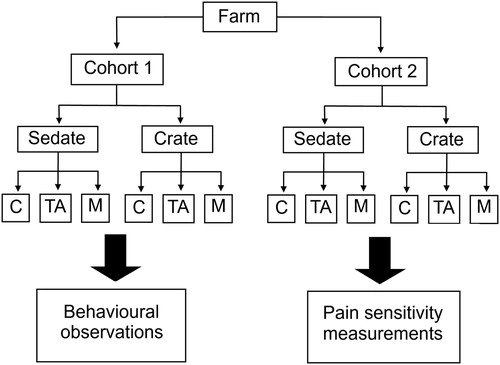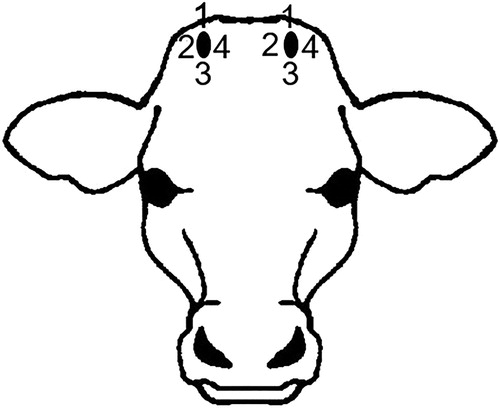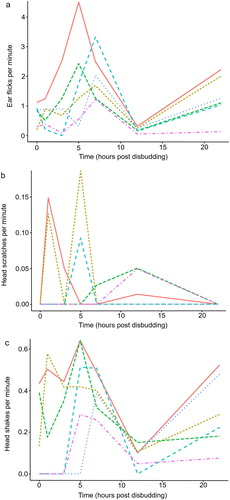Figures & data
Figure 1. Diagrammatic representation showing the allocation within farms of calves to be disbudded in a crate or sedated, and to receive no further treatment (C), or receive a topical anaesthetic (TA) or meloxicam (M). The first cohort was observed after disbudding for behavioural measurements, and 3–21 days later the second cohort had pain sensitivity measurements recorded after disbudding.

Table 1. Description of the six different treatment groups used to investigate the effect of a topical anaesthetic (TA)a on the behaviour, pain sensitivity and weight gain of dairy calves following cautery disbudding.
Table 2. Definitions of behaviours that were observed in dairy calves following cautery disbudding.
Figure 2. Diagram showing the position of pressure algometer placement for measurement of pain sensitivity in calves following disbudding. The black ovals indicate the position of the horn bud wound and the numbers indicate the location for placement of the pressure algometer.

Table 3. Number of calves enrolled on three farms in six different treatment groups used to investigate the effect of a topical anaesthetic (TA) on dairy calves following cautery disbudding.
Figure 3. Median number of (a) ear flicks, (b) head scratches and (c) head shakes per minute recorded in calves after disbudding in crates with no further treatment (red solid line), or were treated with meloxicam (brown dotted line), or a topical anaesthetic (green dashed line), or were sedated with no further treatment (turquoise dashed line), or were also treated with meloxicam (blue dotted line), or a topical anaesthetic (pink dashed line).

